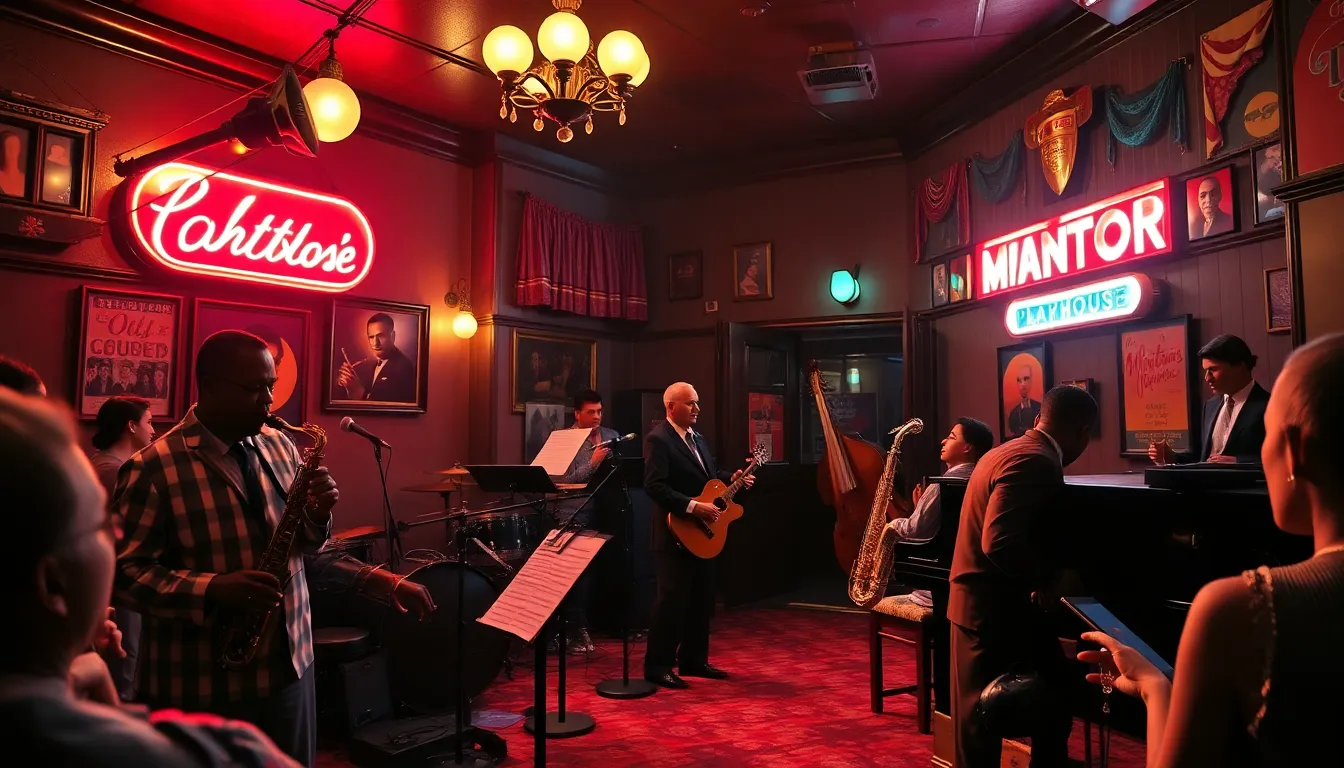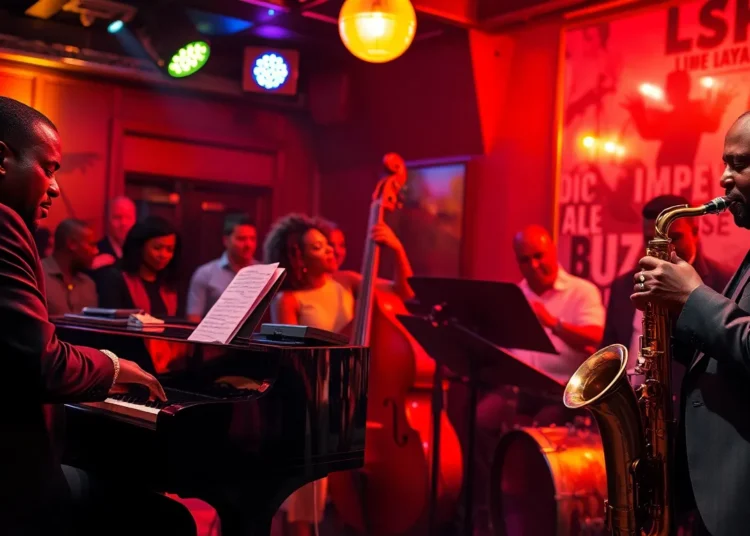In the heart of Harlem, a legendary venue known as Minton’s Playhouse sparked a cultural revolution that had everyone tapping their feet and snapping their fingers. This iconic jazz club wasn’t just a place to grab a drink; it was the birthplace of a musical movement that would shape American culture for decades. Picture it: a vibrant stage, talented musicians, and an electric atmosphere where creativity flowed like the finest bourbon.
During the Harlem Renaissance, Minton’s became a haven for artists, poets, and musicians, all eager to push the boundaries of their craft. It was here that jazz giants like Thelonious Monk and Charlie Parker honed their skills, transforming the sound of music forever. So, buckle up as we dive into the rich history of Minton’s Playhouse, exploring how this unassuming club became a beacon of innovation and a symbol of the Harlem Renaissance.
Mintons Harlem Renaissance
Minton’s Playhouse served as a cornerstone of the Harlem Renaissance, becoming a cultural hub for artistic expression. Renowned for its vibrant atmosphere, this jazz club offered an inviting space for musicians, poets, and visual artists to collaborate. Important figures like Thelonious Monk, Charlie Parker, and Billie Holiday graced its stage, refining their craft and pushing musical boundaries.
Creativity flourished within Minton’s walls. The venue hosted late-night jam sessions that became legendary, fostering a community that supported innovation and experimentation. Artists often mingled, exchanging ideas and influences that subsequently shaped the trajectory of jazz and American music.
The ambiance resonated with energy, and patrons experienced performances that showcased groundbreaking styles. Bebop, a genre that originated during this period, took shape in the intimate setting of Minton’s. This pivotal shift in jazz marked a departure from big band swing, emphasizing improvisation and complex harmonies.
Minton’s also played a significant role in the broader sociocultural movement of the Harlem Renaissance. It reflected the struggles and aspirations of the African American community during the 1920s and 1930s. The club not only entertained but also served as a platform for social commentary and artistic exploration.
Minton’s Playhouse stands as a testament to the rich legacy of the Harlem Renaissance, capturing the spirit of an era where creativity knew no bounds and music transformed lives.
Historical Significance

Minton’s Playhouse stands as a cornerstone in understanding the Harlem Renaissance’s cultural landscape. The establishment fostered a unique environment where creativity thrived.
Origins of Minton’s Playhouse
Minton’s Playhouse, founded in 1938 by Henry Minton, emerged as a jazz club in Harlem. The venue quickly became popular among local musicians and artists seeking a space to express their talents. Many notable figures, including Thelonious Monk and Dizzy Gillespie, often performed there. The space initially attracted patrons for its affordable drinks and lively atmosphere. Jazz enthusiasts flocked to the club, igniting a sense of community that defined the era.
Cultural Impact on the Harlem Renaissance
Minton’s Playhouse contributed significantly to the cultural movement during the Harlem Renaissance. The club served as a launching pad for revolutionary musical styles like bebop, allowing musicians to experiment with improvisation. Artists collaborated, creating a vibrant scene that blended various art forms. Social issues were frequently addressed through music, offering commentary on the African American experience. The connections forged within Minton’s inspired countless artists, shaping the trajectory of jazz and American music for generations.
Notable Figures
Minton’s Playhouse attracted a myriad of influential artists and musicians during the Harlem Renaissance. The club’s vibrant atmosphere fostered collaboration among creative individuals.
Key Musicians and Artists
Thelonious Monk stood out as a premier figure in jazz, known for his unique compositions and improvisational style. Billie Holiday graced Minton’s with her soulful voice, captivating audiences with her emotional performances. Charlie Parker also frequented the club, introducing innovative ideas that reshaped jazz music. Additionally, musicians like Dizzy Gillespie and Max Roach contributed to the evolving sound of bebop, further enriching the club’s legacy.
Contributions to Jazz and Art
Minton’s served as a breeding ground for new musical styles, particularly bebop, characterized by intricate melodies and rhythms. Late-night jam sessions provided a space for experimentation and creativity, encouraging musicians to push boundaries. The club became a venue for artistic expression, where poets and visual artists showcased their talents. Through this vibrant community, Minton’s played a crucial role in shaping modern jazz and fostering a cultural movement that resonated throughout American society.
Minton’s Atmosphere
Minton’s Playhouse fostered a vibrant and inviting atmosphere, crucial to its legacy during the Harlem Renaissance.
Ambiance and Design
Subtle lighting set an inviting tone, allowing artists to explore their creativity freely. The intimate layout meant musicians were close to their audience, which encouraged spontaneous interactions. Rich colors adorned the walls, reflecting the club’s cultural significance. Unique decor elements celebrated African American heritage, further enhancing the space’s charm. Acoustic design helped produce exceptional sound quality, enriching performances for everyone present. This carefully crafted environment became a sanctuary for innovative jazz, where creativity thrived.
The Role of the Audience
Minton’s audience played a vital part in its unique energy. Supportive crowds cheered on emerging talents, creating a sense of community. Patrons brought diverse backgrounds, enriching conversations around music and art. They engaged with performers, often contributing to the spontaneous jam sessions that defined the club. An appreciation for artistic expression flourished here, where every individual had a role in shaping the experience. This interactive environment sparked inspiration, making each night at Minton’s memorable.
Legacy and Influence
Minton’s Playhouse remains a cornerstone of jazz history, influencing music and culture for generations. Its significance transcended time, shaping the development of various musical genres.
Lasting Effects on Music and Culture
Minton’s shaped the evolution of jazz, most notably bebop. Not only did musicians hone their craft in this creative oasis, but the club also fostered innovative compositions that became staples in jazz. The collaboration among artists led to groundbreaking performances that redefined American music. As jazz gained popularity, Minton’s influence spread beyond Harlem, inspiring artists across the nation. Contributions from musicians like Thelonious Monk and Billie Holiday left an indelible mark, solidifying a legacy that persists in contemporary music genres.
Minton’s in Modern Times
Today, Minton’s Playhouse still resonates as a symbol of rich cultural heritage. The venue hosts events that celebrate jazz, attracting both seasoned musicians and new talent. It serves as a reminder of the vibrant artistic community that once flourished during the Harlem Renaissance. Patrons experience live performances that pay homage to the club’s legacy while showcasing fresh interpretations of classic jazz. Modern jazz artists honor the pioneering spirits that once graced the stage, creating a dynamic atmosphere that echoes Minton’s historical significance.
Conclusion
Minton’s Playhouse stands as a testament to the vibrant spirit of the Harlem Renaissance. Its intimate setting and welcoming atmosphere nurtured countless artists who pushed the boundaries of jazz and artistic expression. The club not only served as a launchpad for legendary musicians but also reflected the cultural and social dynamics of its time.
Today, Minton’s legacy continues to thrive, inspiring new generations of artists and jazz enthusiasts. By honoring its rich history while embracing innovation, Minton’s remains a vital part of America’s cultural landscape. The echoes of its past still resonate, reminding everyone of the transformative power of music and community.










